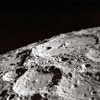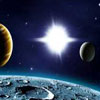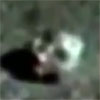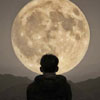Somebody Else Is On The Moon
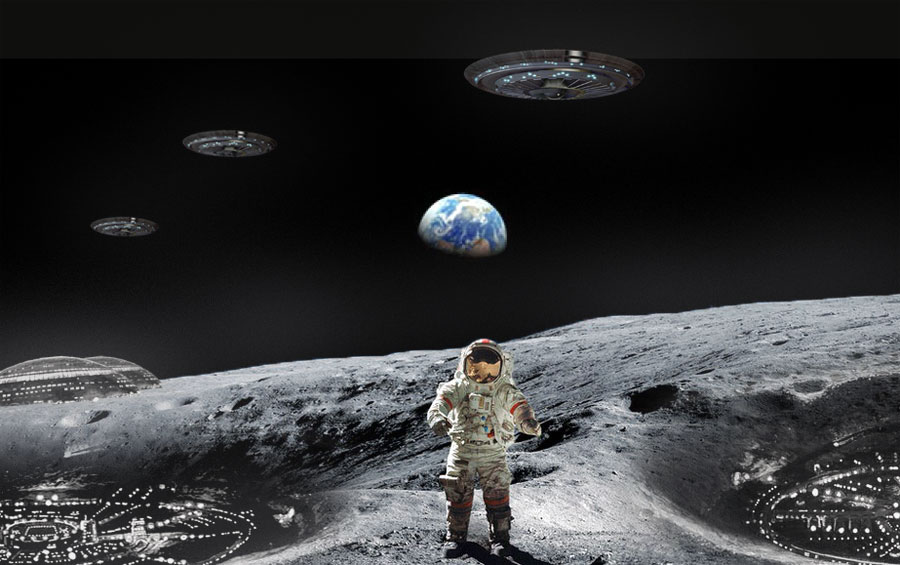 by George H. Leonard – With Videos by Bruce Sees All
by George H. Leonard – With Videos by Bruce Sees All
What NASA Knows But Won’t Divulge!
With careful logic and reason, George Leonard has studied all the data (including official NASA photographs and the astronauts’ Apollo tapes) to prove his theory of a highly advanced underground civilization that is working the surface of the Moon—mining, manufacturing, communicating, and building!
Not just intrigued–as countless people have been since Galileo first trained a telescope on the Moon in 1609–but startled. Startled by lights, strange obscurations, craters which have come and gone, moving bands of color, odd markings, and even suggestions of engineering.
This equivocal emotion changed in the 1960s to a conviction that the evidence added up to signs of intelligence. Few of the observers (especially the professionals) talked publicly about it. They were restrained by professional pride, fear of ridicule, strictures imposed by the scientific method, and lack of the kind of proof one can subject to laboratory tests. The coterie of observers holding this conviction was small.
The National Aeronautics and Space Administration (NASA) has taken more than 100,000 photos of the moon. As the end product of a huge expenditure (I should say one end product; others include visual sightings by astronauts, the rocks and soil they brought back, and scientific tests with countless instruments), these glossy photos are excellent, and some of them reveal fantastic things.
One can search for a long time in the photograph tubs at NASA’s public affairs offices and not see them all. I have examined several thousand of the better pictures, noting the anomalies and more obvious examples of artifice. Some of the photos intriguing me have caused others to raise questions; a few, which fortified my conviction that the Moon is occupied by a very advanced race or races, have not caused a ripple of concern or excitement. My conclusion is that there is just too much data, too many pictures, for any two people to cover the same ground.
And NASA drowns in data. Scientists representing all disciplines have subjected the Moon to spectrographic and seismographic and laser-beam and radar-mapping and other tests, whose results fill room after room after room. Add to this the countless symposia and treatises and minutes of meetings, and we have a store of information no one person can wade through, to say nothing of comprehend. (Then double the total to allow for Soviet data!)
The problem is complicated by the number of disciplines. Each thinks it has “the word.” Most scientists spend a long time learning how to communicate with their peers; some can never overcome the shock of interdisciplinary transactions. A scientist is often tempted to attribute the criticism of a pet thesis by someone from a different discipline to the difference between them, rather than to accept it constructively. In an ideal world of full scientific communications, the data about the Moon would require years to review and understand; in the real world, the job may never be done. It is pertinent to point out, too, that friction between the scientists and engineers over the space effort has become apparent after a superficially harmonious start. Goals and methods to reach those goals are often seen from entirely different standpoints by these two groups.
The geologist sees the Moon in terms of rocks and soil. The astrophysicist is interested in the origin and evolution of the Moon. The exobiologist thinks of bacteria which might be in the soil, or signs of the building blocks of life. The chemist can list all the elements found in the maria and the uplands. Ad infinitum. Few people can put it all together with any creativity or broad insight. It’s a sin not to have a strong background in a discipline–but if you have it, you may be lost, unable to see the forest. We end up with a tide of abstracts and journal articles, like ingredients for a soup laid out on a counter–with the chef on vacation.
Our satellite has always suffered inattention by the professionals. Patrick Moore wrote in his A Survey of the Moon (Norton, 1963): “Most of the reports come from amateurs. . . . Until recently there were not many professional astronomers who paid serious attention to the Moon” and “No professional astronomer has enough spare time to spend night after night studying the features of the Moon with an adequate telescope.”
A lightly made case. The number of hours spent by amateurs rubbing red dust into glass and watching the Moon in dark yards is incalculable. Many know the near side of the Moon better than some geographers know Earth. At the same time, the head of the astronomy department at a large Midwestern university brushed aside my questions about the Moon (after being very helpful in such matters as making sky charts available) with the comment “I have no time for the Moon. There is my own research, there are the graduate students who need help in their theses . . .”
If the Moon suffered lack of attention by real heavyweights prior to the NASA probes, it has not gained very much since. Many astronomers have not closely examined the NASA photographs; few outside NASA have.
John J. O’Neil, science editor and amateur astronomer, reported in 1953 that he saw a twelve-mile-long bridge between two promontories on the edge of Mare Crisium. It was, he said, straight as a die, and cast a shadow beneath. We all pointed our telescopes there, straining to see, while O’Neil took his lumps from the professionals. As this is written, I have before me the hauntingly beautiful shot of the Mare Crisium area taken by the Apollo 16 spacecraft in April, 1972. Several “bridges,” some arching high, some straight, cast shadows on the ground as the sun streams beneath.
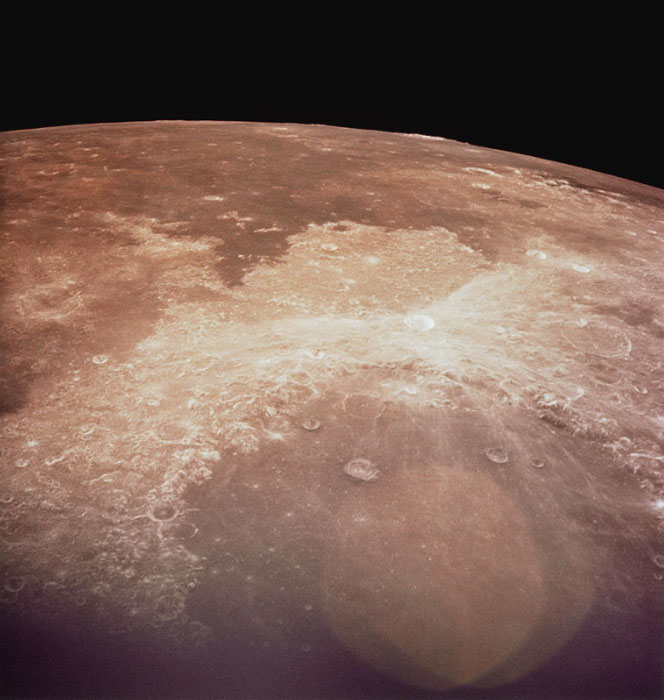 One professional astronomer wrote: “O’Neil’s sketch was hopelessly inaccurate, but later observations made by Wilkins indicated that some sort of arch did in fact exist nearby. This may be so, but at best it is a tiny natural feature of no interest or importance whatsoever.”
One professional astronomer wrote: “O’Neil’s sketch was hopelessly inaccurate, but later observations made by Wilkins indicated that some sort of arch did in fact exist nearby. This may be so, but at best it is a tiny natural feature of no interest or importance whatsoever.”
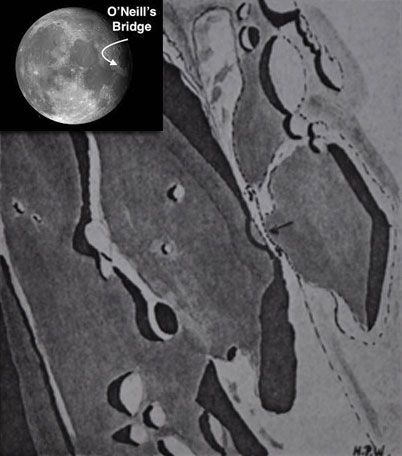 So you can see that controversy rages. When a person deserving any respect at all in a field makes an assertion not in harmony with the current beliefs, he or she has the burden of proof. It is less painful to be criticized (within reason!) than it is to be ignored. Others will ask questions, be skeptical, try to replicate the finding. This is healthy. Without it, all sorts of rascals might invade a field of knowledge and lower the standards. Then where would we be? How could we be sure that breakthroughs were real? Professionals are conservative, and tend to keep their assertions in check until they have been subjected to the “research method.”
So you can see that controversy rages. When a person deserving any respect at all in a field makes an assertion not in harmony with the current beliefs, he or she has the burden of proof. It is less painful to be criticized (within reason!) than it is to be ignored. Others will ask questions, be skeptical, try to replicate the finding. This is healthy. Without it, all sorts of rascals might invade a field of knowledge and lower the standards. Then where would we be? How could we be sure that breakthroughs were real? Professionals are conservative, and tend to keep their assertions in check until they have been subjected to the “research method.”
The reader will have already perceived that this information is not presented as, nor intended to be, a scientific work; nor has anything approximating the scientific method preceded it. In the scientific method one collects data, analyzes, formulates hypotheses, and tests those hypotheses in a systematic way. I see no way now to test the tenets of this information systematically, which is one reason why all the scientific test setups filling dozens of rooms at NASA may be off the mark concerning the question of intelligence occupying the Moon. Scientists are compelled to pick things up and subject them to laboratory tests, and, relevant or not, they are going to do it.
This information is the result of studying thousands of NASA photographs, talking with many people associated with the lunar program, reviewing the data where it held promise for clarifying the book’s thesis, reading reports from other countries (e.g., Russia), and tracking down every lead open to me on the Moon’s anomalies: odd seismographic reports; constructions, mechanical rigs, sculpted craters, sprays, and the Moon’s history, weirdest of all.
Who does? The last time I spoke to a crowd, I was faced with three questions which recurred so much that I finally put in big letters on a blackboard for all to see:
No, I do not know who They are.
No, I do not know where They come from.
No, I do not know precisely what Their purpose is.
To admit ignorance to the big question in no way weakens the empirical observations. An idiot can ask more questions than a wise man can answer.
Also thanks to the one-time NASA scientist whom I call Dr. Samuel Wittcomb. This information would still have been written without him, but not only did he make it a better book—he helped me feel cocksure while I wrote it.
Excerpt from Somebody Else Is On The Moon
To continue reading see full pdf download here.
Posted in Life On Other Worlds, Other Topics, UFOswith comments disabled.


